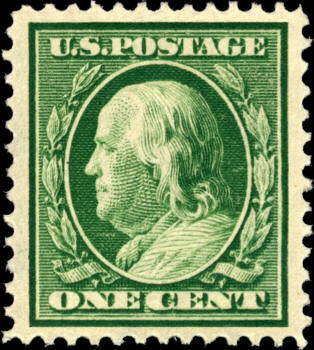Classic U.S. Stamps

“A classic is an outstanding example of a particular style; something of lasting worth or with a timeless quality; of the first or highest quality, class, or rank — something that exemplifies its class. The word can be an adjective (a classic car) or a noun (a classic of English literature). It denotes a particular quality in art, architecture, literature, design, technology, or other cultural artifacts. In commerce, products are named ‘classic’ to denote a long-standing popular version or model, to distinguish it from a newer variety. Classic is used to describe many major, long-standing sporting events. Colloquially, an everyday occurrence (e.g. a joke or mishap) may be described in some dialects of English as ‘an absolute classic’.” (Wikipedia)
This definition of classic certainly applies to the first 100 years of postage stamps (1840 to 1940). The first U.S. stamps (Scott 1 and 2) were printed seven years after the British “Penny Black” by Rawdon, Wright, Hatch & Edson. For the next 47 years several private companies were contracted by the government to design and print U.S. stamps. In 1894, the Bureau of Printing and Engraving took over the production of U.S. stamps. Using the engraved printing process, the Bureau designed and printed five distinct “sets” and numerous Commemorative stamps. The first set is commonly known as the “Triangle” issue while the fifth set was dubbed the “Presidentials”.
In 1918 the Bureau produced a stamp which is known worldwide — not only by collectors, but also by non-collectors. This stamp is as famous today as it was in 1918. It’s commonly known as the “Inverted Jenny” (Scott C3a). Untold number of books and stories were written about stamps from this era. This was truly the classic period of stamp collecting.
View Classic U.S. Stamps
19th Century
20th Century
- 1900 — No Issues
- 1901 — Scott 294-299
- 1902 — Scott 300-318
- 1903 — Scott 319-322
- 1904 — Scott 323-327
- 1905 — No Issues
- 1906 — No Issues
- 1907 — Scott 328-330
- 1908 — Scott 331-366
- 1909 — Scott 367-373
- 1910 — Scott 374-382
- 1911-12 — Scott 383-396
- 1913 — Scott 397-404
- 1914 — Scott 405-447
- 1915 — Scott 448-461
- 1916 — Scott 462-480
- 1917 — Scott 481-497
- 1918 — Scott 498-524
- 1919 — Scott 525-547
- 1920 — Scott 548-550
- 1921 — No Issues
- 1922 — Scott 551-574
- 1923 — Scott 575-613
- 1924 — Scott 614-616
- 1925 — Scott 617-626
- 1926 — Scott 627-642
- 1927 — Scott 643-644
- 1928 — Scott 645-650
- 1929 — Scott 651-681
- 1930 — Scott 682-689
- 1931 — Scott 690-703
- 1932 — Scott 704-725
- 1933 — Scott 726-734
- 1934 — Scott 735-751
- 1935 — Scott 752-775
- 1936 — Scott 776-784
- 1937 — Scott 785-802
- 1938 — Scott 803-838
- 1939 — Scott 839-858

